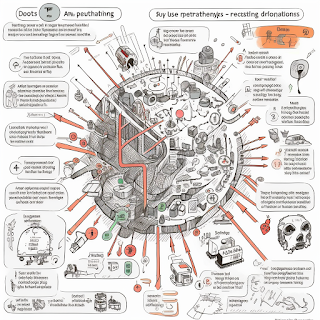Exploring the Intersection of AI, Design and Decision Making: A Comprehensive Guide
Artificial intelligence (AI) is rapidly changing the way we live, work, and make decisions. As more and more businesses adopt AI technologies, it's becoming increasingly important to understand how AI, design, and decision making intersect and how they can be leveraged to drive better outcomes. In this comprehensive guide, we'll explore the ways in which AI is transforming the fields of design and decision making, and discuss the implications for businesses, consumers, and society as a whole.
First, let's define what we mean by AI, design, and decision making. AI refers to the development of computer systems that can perform tasks that typically require human intelligence, such as visual perception, speech recognition, decision making, and language translation. Design, on the other hand, is the process of creating and developing products, services, and experiences that meet the needs and expectations of users. Decision making, of course, refers to the process of choosing between different options based on a set of criteria.
At its core, AI is a tool that can be used to support and enhance decision making. By automating certain tasks and processes, AI can help businesses make more informed and efficient decisions, freeing up time and resources that can be devoted to more strategic activities. But AI is also transforming the field of design, enabling designers to create more personalized and intuitive experiences for users.
One of the key ways in which AI is changing the field of design is by enabling the creation of more personalized experiences. By using machine learning algorithms to analyze data about users' preferences, behaviors, and habits, AI can help designers create products and services that are customized to meet the unique needs and expectations of each individual user. This is particularly important in industries such as retail, where personalization can be a key differentiator and a key driver of customer loyalty.
Another way in which AI is transforming design is by enabling the creation of more intuitive and user-friendly experiences. AI-powered design tools can help designers create more accessible and user-friendly interfaces, reducing the friction and complexity that can often be associated with new technologies. This is particularly important in industries such as healthcare, where patients may be intimidated by complex technology and prefer more straightforward and user-friendly interfaces.
AI is also transforming the field of decision making by providing businesses with more accurate and up-to-date information. By analyzing large amounts of data in real-time, AI can help businesses make better informed decisions, reducing the risk of errors and increasing the speed and efficiency of decision making processes. This is particularly important in industries such as finance, where quick and accurate decision making can have a significant impact on the bottom line.
However, as with any new technology, there are also potential downsides to the intersection of AI, design, and decision making. For example, the increasing reliance on AI in decision making processes raises important ethical questions about accountability and bias. If a decision made by an AI system has negative consequences, who is responsible for those consequences? And how can we ensure that AI systems are free from bias and discrimination, and that they make decisions that are fair and just for all parties involved?
Another potential downside of the increasing use of AI in design and decision making is the risk of job displacement. As AI automates more and more tasks and processes, there is a risk that some jobs may become obsolete, particularly in industries such as manufacturing and customer service. It's important for businesses and society as a whole to consider the potential impact of AI on employment and to develop strategies to support workers as they transition to new roles and careers.
In conclusion, the intersection of AI, design, and decision making is a complex and rapidly evolving field with significant implications for businesses, consumers, and society as a whole. On one hand, AI has the potential to transform the way we design and make decisions, enabling businesses to create more personalized and intuitive experiences for users and make better informed decisions based on up-to-date data. On the other hand, the increasing use of AI in design and decision making raises important ethical questions about accountability, bias, and job displacement.
As the field of AI continues to evolve and grow, it's important for businesses and society as a whole to consider both the potential benefits and risks of AI, and to develop strategies to ensure that AI is used in a responsible and ethical way. This may include investing in education and training programs to help workers transition to new roles in the age of AI, developing ethical frameworks to guide the use of AI in decision making, and engaging in ongoing dialogues about the impact of AI on society.
In the end, the intersection of AI, design, and decision making has the potential to drive significant benefits for businesses and society, but it's up to us to ensure that these benefits are realized in a responsible and ethical way. Whether you're a business leader, designer, or consumer, it's important to stay informed about the latest developments in AI and to actively participate in shaping the future of this transformative technology.



Comments
Post a Comment